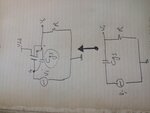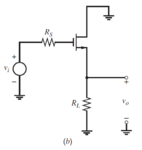forouzanb
Newbie level 6
hi every body
I have a resistor-capacitor circuit that I fitted with MOSFET and want the MOSFET capacitor to phase shift.
Unfortunately, as much as I could increase the amount of this capacitor by increasing the transistor w and l and parallelizing several transistors, I saw no phase difference.
I don't know where my problem is!
Maybe the wrong way to build the capacitor with MOSFETM is wrong
Can anyone help me?
I have a resistor-capacitor circuit that I fitted with MOSFET and want the MOSFET capacitor to phase shift.
Unfortunately, as much as I could increase the amount of this capacitor by increasing the transistor w and l and parallelizing several transistors, I saw no phase difference.
I don't know where my problem is!
Maybe the wrong way to build the capacitor with MOSFETM is wrong
Can anyone help me?



